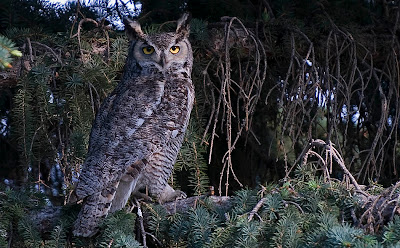North of Powell. December, 2012.
Friday, December 28, 2012
Sunday, December 2, 2012
Sunday, November 4, 2012
Wednesday, October 31, 2012
Sunday, October 21, 2012
Tuesday, October 9, 2012
Tuesday, September 11, 2012
Saturday, September 1, 2012
Thursday, August 23, 2012
Wednesday, August 22, 2012
Thursday, August 16, 2012
Saturday, August 11, 2012
Saturday, August 4, 2012
Tuesday, July 17, 2012
Saturday, July 7, 2012
Monday, June 25, 2012
Friday, June 22, 2012
Monday, June 18, 2012
Saturday, June 16, 2012
Tuesday, June 5, 2012
Sunday, June 3, 2012
Thursday, May 31, 2012
Wednesday, May 16, 2012
Tuesday, May 15, 2012
Thursday, May 10, 2012
Saturday, April 28, 2012
Friday, April 27, 2012
Sunday, April 22, 2012
Saturday, April 21, 2012
Tuesday, April 10, 2012
Young Rough-legged hawk
Ninepipe National Wildlife Refuge in the Flathead Valley,
Montana. April, 2012.
(Note: this was initially misidentified as a Ferruginous Hawk.)
Montana. April, 2012.
(Note: this was initially misidentified as a Ferruginous Hawk.)
Sunday, April 1, 2012
Wyoming Horned Lark

Because of the mild winter and warm spring, the Wyoming Horned Lark has made an earlier than usual return to the sage flats of Wyoming. A true rara avis, the Wyoming Horned Lark, (Hornophila alpestris) is a relatively rare subspecies of the more common Horned Lark (Eremophila alpestris). Whereas the Horned Lark is common in open areas, feeds on seeds foraged from the ground, and is frequently found in flocks of hundreds, the Wyoming Horned Lark is relatively solitary, feeds on insects, and is extremely uncommon.
While it is impossible to know for sure, the speculation is that the Wyoming Horned Lark originated in Texas (where it still winters) and followed cattle herds being driven up to Wyoming in the late 1800’s, preying on insects stirred up by the large herds. Certainly, the Wyoming Horned Lark does not appear in either the bead work or pictographs of the Shoshone, Arapahoe, or Bannock, nor do they appear in any origin stories.
Like its better known cousin, the Wyoming Horned Lark has a pale brown plumage, with a striking black mask and prominent black breast band. A pale yellow throat highlights the mask and adds a refreshing touch of color to an otherwise drab bird. However, what distinguishes the Wyoming Horned Lark is the presence of horns used for hunting. Extremely light and needle sharp, the horns are used to impale flying insects.
Fortunately, the Wyoming Horned Lark population has been growing over the last decade as a result of increased oil and gas activity in the state.
Although Wyoming Game and Fish is reluctant to publicize their presence, look for them in the oil patch. Because the Wyoming Horned Lark likes to hunt from a perch, resting pumper units and utility poles provide excellent launching platforms. Service vehicles, as well as seismic testing, stir up insects and provide excellent hunting. Adults frequently return to a nest of hungry hatchlings with their horns festooned with grasshoppers like a shish kebab.
Saturday, March 31, 2012
Monday, March 26, 2012
Saturday, March 10, 2012
Monday, March 5, 2012
Friday, March 2, 2012
Northern Bighorn Mountains
Friday, February 17, 2012
Friday, February 10, 2012
Tuesday, January 31, 2012
Anti-crepuscular rays
Polecat Bench. January, 2012
The term for rays cast by the setting sun is crepuscular--associated with twilight. They are caused by light passing through holes in the clouds, and they are actually parallel. It's a trick of perspective which makes it appear they originate from a single point. This photo was taken at sunset; it faces mainly to the east. Since the rays appear to be opposite the setting sun, they are called anti-crepuscular rays.
Saturday, January 28, 2012
Wednesday, January 25, 2012
Thursday, January 19, 2012
Friday, January 13, 2012
Monday, January 9, 2012
Thursday, January 5, 2012
Subscribe to:
Comments (Atom)













































